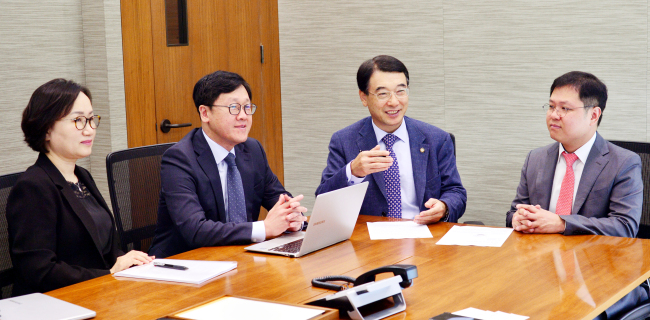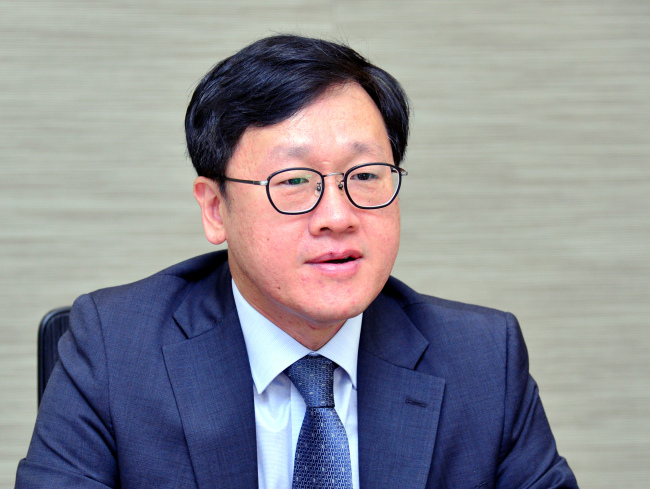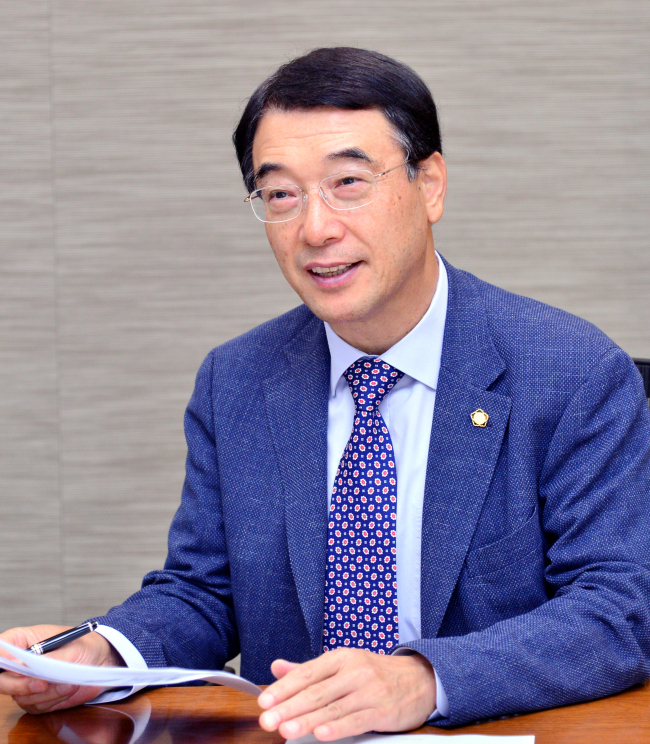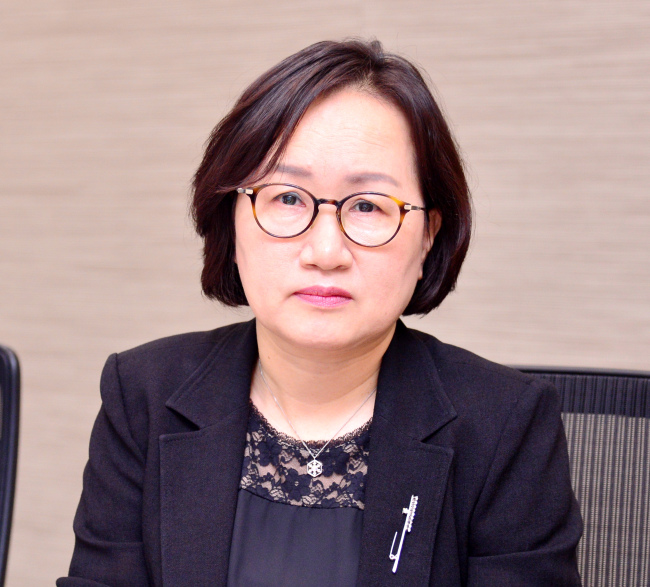[IP in Korea] 'Cosmax’s patent nullity win against Amorepacific was technical'
ODM firm's legal representation explains how it won suit against Amorepacific over 'cushion compact' technology
By Bae Hyun-jungPublished : July 8, 2018 - 14:02
The Korea Herald is publishing a series of interviews with experts in the intellectual property sector. This is the 19th installment. -- Ed.
Combining foundation makeup with skincare in an innovative easy-to-apply package, cushion compacts have been identified by some as the biggest game-changer in the cosmetic industry in recent years, as well as the top contributor to the rise of Korea’s cosmetics exports.
The leader of the innovation was South Korea’s largest cosmetics manufacturer, Amorepacific Group, which first launched an unprecedented type of polyurethane foam sponge compact foundation product in 2008 through its brand Iope.
But should Amorepacific retain a monopoly on the product category now that the global market for it has grown past the billion dollar mark?
The cosmetic giant previously had a cushion compact-related patent nullified due to a lack of technical distinction, but had been using another patent to keep off rivals, especially other global brands, from using the core technology.
Challenging its monopolization was Cosmax, an original design manufacturer for cosmetic products here. The company won a yearslong patent dispute through a team of intellectual property lawyers and patent attorneys at law firm Shin & Kim.
Combining foundation makeup with skincare in an innovative easy-to-apply package, cushion compacts have been identified by some as the biggest game-changer in the cosmetic industry in recent years, as well as the top contributor to the rise of Korea’s cosmetics exports.
The leader of the innovation was South Korea’s largest cosmetics manufacturer, Amorepacific Group, which first launched an unprecedented type of polyurethane foam sponge compact foundation product in 2008 through its brand Iope.
But should Amorepacific retain a monopoly on the product category now that the global market for it has grown past the billion dollar mark?
The cosmetic giant previously had a cushion compact-related patent nullified due to a lack of technical distinction, but had been using another patent to keep off rivals, especially other global brands, from using the core technology.
Challenging its monopolization was Cosmax, an original design manufacturer for cosmetic products here. The company won a yearslong patent dispute through a team of intellectual property lawyers and patent attorneys at law firm Shin & Kim.

“Monopolization is an essential factor of patent, guaranteeing a cost recovery process for innovators and recognizing the right holder’s legal entitlement to the consequent benefits,” Moon Yong-ho, partner and leader of Shin & Kim’s litigation team on the Amorepacific-Cosmax cushion patent dispute, told The Korea Herald in an interview.
“The system, however, also means that when a specific technology turns out to be underqualified for such exclusive rights, it should be freed from restrictions and offered for public use.”
On May 31, the Supreme Court dismissed Amorepacific’s patent on cushion compacts, putting an end to a three-year legal battle, upholding an earlier ruling by the Patent Court and confirming the claim of six smaller beauty companies including Cosmax, the contract manufacturer for the given type of product.
The key reason for the court‘s decision was that Amorepacific failed to prove the required level of “inventive step” to differentiate its patented technology.
This was the second time that the company had a cushion compact patent nullified. The previous patent, which had only stated polyurethane foam as cushion sponge material, was nullified in 2013. The court found that the definitions in it were ambiguous, as it did not specify whether the sponge should be ester-based or ether-based.
“The blind spot in (Amorepacific’s second) patent was that it could not explain why its choice of ether polyurethane as cushion sponge foam material deserved credit as source technology,” explained Lim Bo-kyung, another partner member of the team.

Ester polyurethane, frequently used to make car seats and other industrial goods, is known for its durability and elasticity but has a relatively course texture, while the ether-based polymer is softer, more affordable and also more hydrolysis-proof -- that is, resistant to decomposition when it comes into contact with water. The former material was used in the first-generation cushion products.
But upon receiving consumer feedback that the given products tended to crumble away in heat and humidity, the company sought an alternative material, stumbled upon ether polyurethane, and applied in 2011 for a patent on ether-based foam technology, which was the subject of their latest patent dispute, according to the lawyer.
The patent in question had for years acted as a protection tool for the cosmetic giant to maintain its lead in the expansive market. Amorepacific’s global sales for cushion compacts hit the 100 million mark in unit terms and reached 1 trillion won ($900 million) in 2016, representing a major share of the Korean cosmetics business.
The dispute escalated as Cosmax started manufacturing cushion compact products at the request of major global brands, such as Lancome of L’Oreal Group and Nars of Shiseido Group.
“A key point of debate throughout this entire case was that ether should have been the more reasonable choice from the beginning, considering its cost efficiency and hydrolysis-proof characteristic,” Lim said.
Amorepacific’s logic was that its adoption of ether was an inventive solution to the disintegration problem.
Shin & Kim requested for an official authentication procedure to prove the purported differences of the two materials -- one of the most challenging steps of the lawsuit.

“We went through great lengths to form a consensus on the experiment protocols, for the sake of process transparency, but the problem was that most of the credible appraisal institutes refused to perform the test, presumably because of Amorepacific’s powerful leverage in the industry,” Moon said.
Facing such roadblocks, the litigation eventually carried out multiple tests, including one at Dongkuk University’s biological chemical engineering laboratory.
“As the set of tests did not correspond to court-qualified appraisal formats, we took every precaution to prevent possible disputes on transparency and fairness, recording the entire process around the clock and abiding by every step previously agreed with Amorepacific,” Lim explained.
Amorepacific, on the other hand, failed to submit relevant test results that could prove its technological innovation in the use of ether-based polyurethane foam, according to Shin & Kim.

“The Korean Intellectual Property Office and its affiliated Intellectual Property Trial and Appeal Board are globally renowned for their relatively swift and thorough process,” said Lee Tae-young, patent attorney of the team.
The intrinsic limit of the system is that patent assessments are based on the written contents of the application forms, according to the patent attorney.
“Very often, a flaw or loophole in a given patent is detected during a legal dispute, in which the dissenter would invest a lot of effort and money in annulling the patent,” she explained.
“In fact, that is the intent of the patent nullity trial, to allow stakeholders to freely dispute the validity of a patent through legitimate procedures.”
Beside the technical factors, there may also have been a policy context which further pushed the court to apply strict standards to the local market champion, the legal team suggested.
“In rivalry with China and Japan, both of which are top-ranking states in terms of patent applications, South Korea’s Patent Court has increasingly been striving to rise as the central IP court in the Northeast Asian region,” Moon explained.
As part of that vision, the Patent Court introduced an international trial chamber in June this year, allowing parties to make pleading in English and providing real-time translation.
“In order to underline its global competitiveness, the court would have made extra efforts for impartiality, lest it be criticized for nationalism and protectionism,” the senior lawyer added.
The latest court ruling on Amorepacific‘s patent nullification cannot be seen as a change in the patent assessment standard but only as a reconfirmation of the nature of the system, Moon added.
“Monopoly is a strong legal protection offered only to innovative technologies that deserve reward for the resources spent in the research and development,” Moon said.
“When it comes to underqualified patents that impose unjustified market barriers, it is the patent court‘s role to release the technology from restriction for the sake of free competition and technology advancement.”
By Bae Hyun-jung (tellme@heraldcorp.com)








![[KH Explains] Hyundai's full hybrid edge to pay off amid slow transition to pure EVs](http://res.heraldm.com/phpwas/restmb_idxmake.php?idx=644&simg=/content/image/2024/04/18/20240418050645_0.jpg&u=20240419100350)






![[From the Scene] Monks, Buddhists hail return of remains of Buddhas](http://res.heraldm.com/phpwas/restmb_idxmake.php?idx=652&simg=/content/image/2024/04/19/20240419050617_0.jpg&u=20240419175937)

![[KH Explains] Hyundai's full hybrid edge to pay off amid slow transition to pure EVs](http://res.heraldm.com/phpwas/restmb_idxmake.php?idx=652&simg=/content/image/2024/04/18/20240418050645_0.jpg&u=20240419100350)

![[Today’s K-pop] Illit drops debut single remix](http://res.heraldm.com/phpwas/restmb_idxmake.php?idx=642&simg=/content/image/2024/04/19/20240419050612_0.jpg&u=)